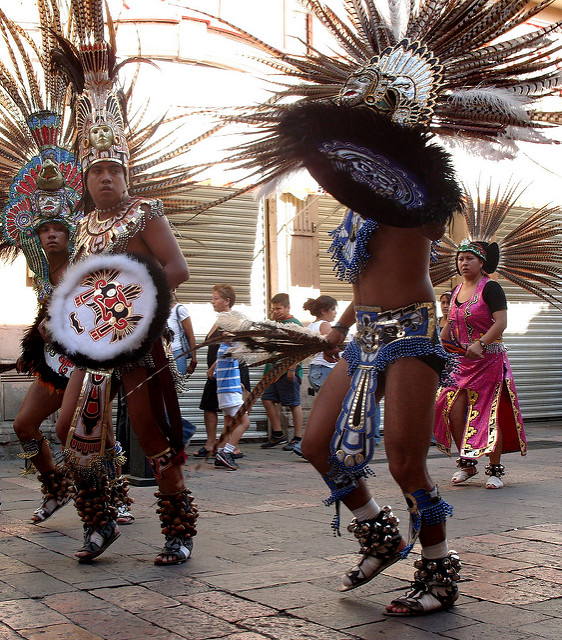The OC Weekly recently published an article about Davíd Vázquez, a native Nahuatl speaker who has taught the language of the Aztecs in Santa Ana and throughout Southern California for the past two decades. Keeping indigenous languages alive is important for Mexican-Americans because it represents a step toward decolonizing and removing the European paradigm that has been imposed upon us since the Spanish conquest.
“Long suppressed, Nahuatl lives on in a million-plus speakers in Mexico and the U.S., as well as in popular culture. Words such as “avocado,” “tomato,” “coyote” and “chocolate” trace their roots to it. As with Gaelic, Nahuatl has become a fertile ground for assimilated parents when naming their children, including Xochitl (flower) and Citlali (star). Chicano activists try to sprinkle phrases into their lives; Grammy-winning band Ozomatli named themselves after the servant to the Aztec god of dance. You even get Nahuatl at your local Chipotle, which takes its name from chilpoctli—”smoked chile.”
For the past 20 years, Vázquez has taught tens of thousands of students at community centers, universities and churches across Southern California. He’s held classes at the Episcopal Church of the Messiah at least monthly since 1996, when the immigrant arrived to the United States and began working as a janitor for the downtown church. Though now approaching retirement, Vázquez still has big plans for Nahuatl. He wants to create language academies in Santa Ana and Mexico that’ll continue his life’s work and propagate an alphabet he created, Sequoyah-like, in order to keep the ancient language alive.”
Learning Nahuatl makes students challenge the dominant structure of European languages and helps connect Mexican-American students to their indigenous past. Developing an indigenous consciousness helps our students critique colonialism and the systems that have been created in the name of advancing imperialism and capitalism. We want our young scholars to be critical thinkers and to have a strong understanding of their rich history.
Most schools don’t offer indigenous languages, and European languages are always emphasized as is Western civilization. It’s time for our youth to have access to languages like Nahuatl so they can examine their link to the Americas. The Semillas Community Schools is another place where young students can be exposed to and learn Nahuatl. As schools continue to teach and even emphasize Spanish, Nahuatl should be acknowledged and given its place in the curriculum.
We are all in this together with you. We want to be a resource for you and for all of the children you love. Whether you need some info or you have info to share, you know where to go…LA Comadre.
Latest posts by La Comadre (see all)
- Cómo está Regresando la Escuela de un Salón - July 28, 2022
- ¿Se Debe Exigir a los Estudiantes recitar el Juramento a la Bandera? - June 10, 2022
- 5 Aplicaciones de Salud Mental y Bienestar para descargar ahora Mismo - May 5, 2022
- How the One Room Schoolhouse Is Making a Comeback - May 5, 2022
- El Dinero Importa: Donación de $ 1 millón a Programas de Educación Financiera en LAUSD - April 25, 2022


Paloma delaLuz
Would you know of any Nahuatl classes available in the Inland Empire – Ontario/Riverside/Chino areas?